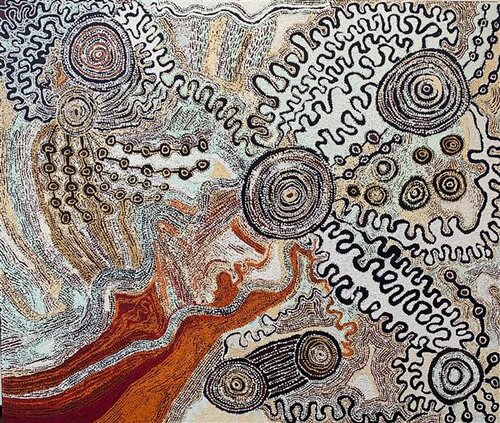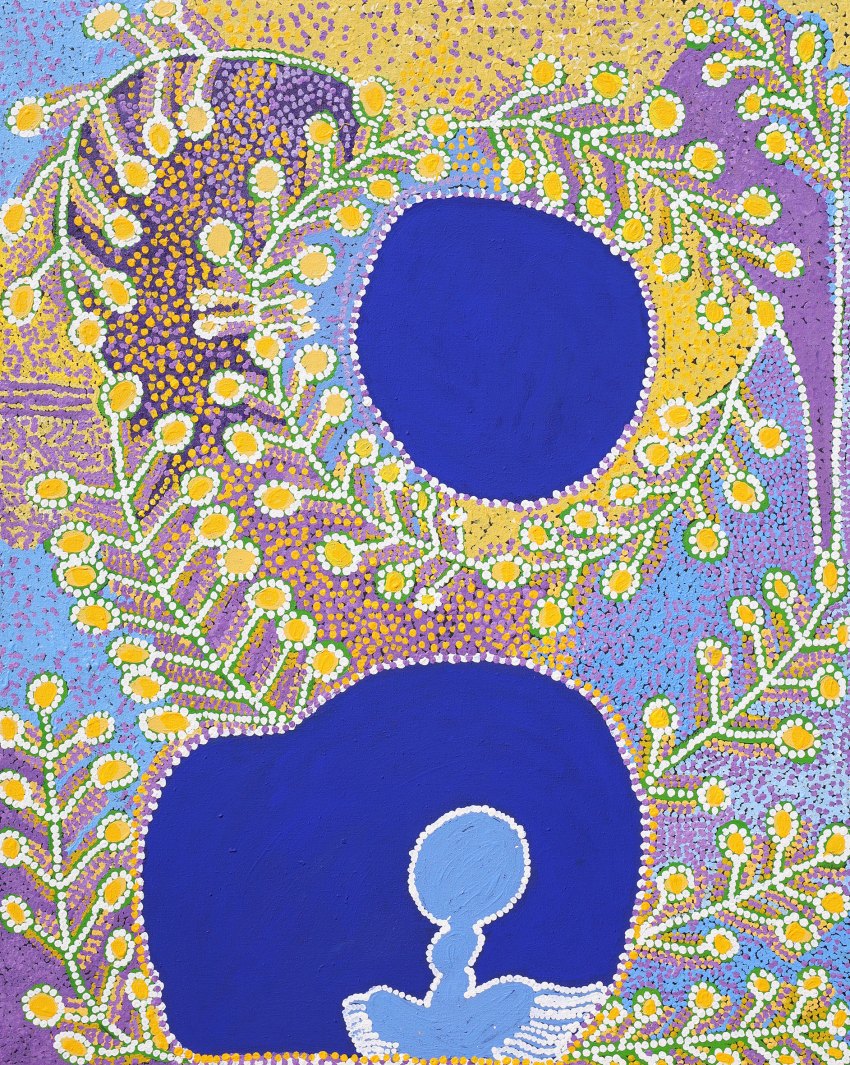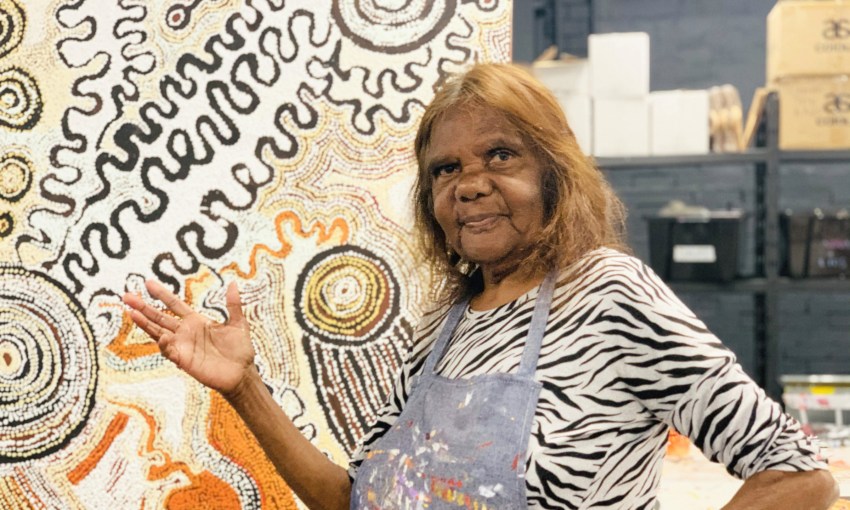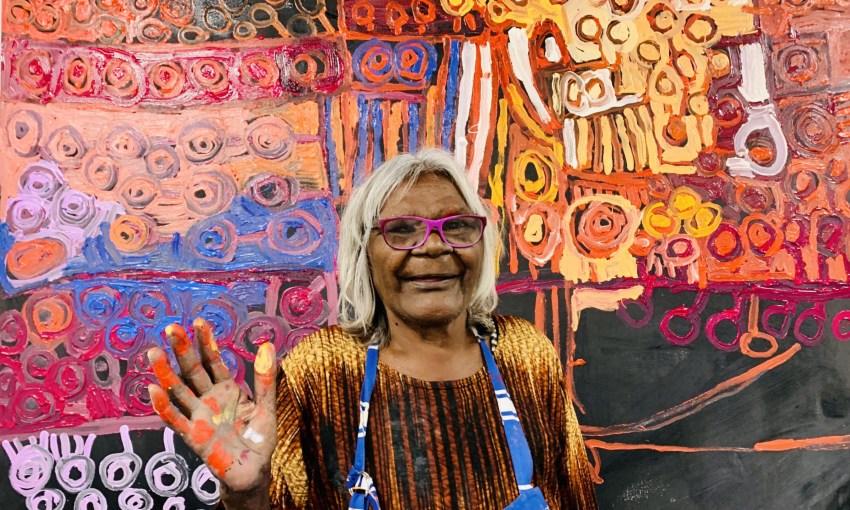Two of APY Gallery Adelaide's resident painters, Sammy Lyons and Leah Brady, are finalists for Australia’s most prestigious Indigenous art award. Fill your home with their work, and the work of other APY Lands artists, from the gallery's new online store.
Buy nationally recognised art online from APY Art Centre Collective
Sammy Lyons and Leah Brady have been shortlisted for the lauded 2020 Telstra National Aboriginal & Torres Strait Islander Art Awards, which identifies inspiring work by First Nations artists across Australia.
APY Art Centre Collective manager Skye O’Meara says this is huge, but unsurprising for the Aṉangu Pitjantjatjara Yankunytjatjara (APY Land) artists.
“The APY region is known internationally for producing some of the best Indigenous paintings that are happening in Australia today,” Skye says.
“I’ve wondered about the fact that this work is so known and celebrated abroad, and yet doesn’t seem to be known by people that we share the state with.”
Both Sammy and Leah work on their dot paintings at the APY Art Gallery just off Light Square, which is studio and exhibition space run by not-for-profit group, APY Art Centre Collective, and only opened its doors last year.
The Adelaide centre affords up to 20 APY artists the room and resources to make and exhibit art. It also provides a stable income.
The awards shortlist is especially poignant for Leah, who left the APY Lands four years ago to be closer to the Royal Adelaide Hospital for medical treatment.
She’d a dedicated artist who comes to work even when it’s raining, Skye says.
“She’s pre-renal, and she started painting less than 12 months ago, and she’s so committed,” Skye says.
“She’s so proud to be experiencing this success.”


Leah Brady’s ‘Wanampi Tjukurpa / Piltati’ (above) by has been sold but 249-20AS (right) is up for grabs
Over a month ago, the centre, like all non-essential services, was forced to shut its doors to limit the spread of COVID-19.
With patrons not able to purchase art in-person, it prompted the organisation to go online.
The online marketplace launched last Friday and includes stock room works as well as pieces previously hung on the gallery walls, all from APY artists.
Pieces are made by those in their first five years of practise, and is mostly produced by those under the age of 45. Prices range from $960—$4,460.
Skye says the work is affordable and an investment for buyers.
“Also, when someone’s buying this art, they can do so with the knowledge that that that 80 per cent of the wall price is going back to that community,” she says.
“[This income is] food on the table for Aṉangu family to eat.”
Up to 30 per cent of last year’s gallery sales were made by overseas purchasers, with 50 per cent hailing from the East Coast.
Skye implores South Australians to recognise the immense talent found in the state, and says 17 artists from the APY Lands were shortlisted for one of Australia’s longest-running art prizes, The Wynne Prize, at the Art Gallery of New South Wales, last year.
“The APY art movement is a unique South Australian story. It should be a great source of pride for all South Australians,” she says.

Nita Williamson’s ‘Ngayuku ngura – My Country’ which can be purchased online








